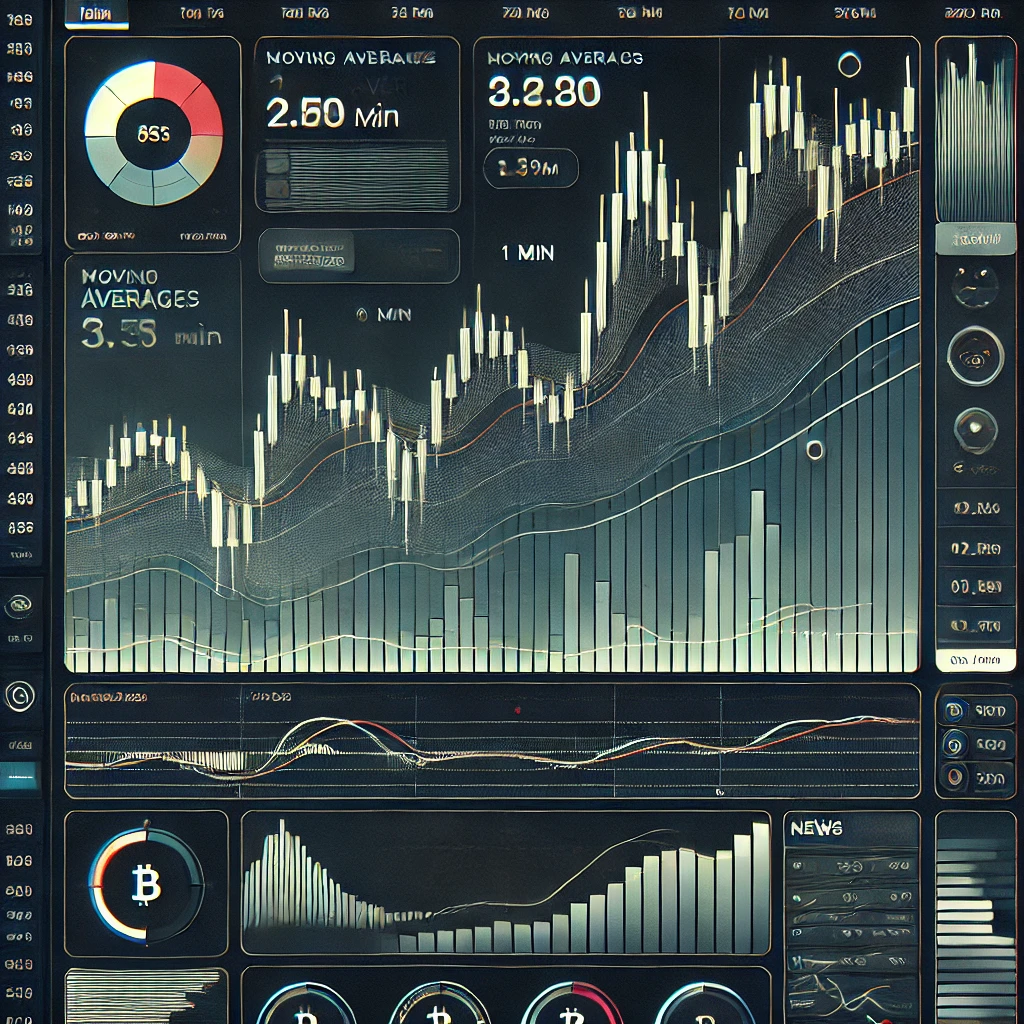The forex market is renowned for its dynamism. The on-and-off price fluctuation is brought on by a wide range of reasons. Market volatility increases uncertainty. Additionally, it also enhances the risk for traders, but with the appropriate approaches, they can also uncover possibilities for significant rewards. Whether you are an expert trader looking to hone your methods or a beginner trying to understand the fundamentals, you need the right strategies for your trading.
Do you want the information and resources required to potentially succeed in a setting where change is the only constant? This article will explore successful forex trading tactics designed for volatile market conditions. More so, we are about to assist traders in navigating the stormy waters with confidence.
What is the Concept of Volatility in the Forex Market?
Understanding what volatility implies in the context of the forex market is essential. Before delving into specific techniques, it’s crucial to understand what volatility means. The degree of price fluctuations over a specific period is referred to as volatility. Wider price fluctuations are implied by high volatility. On the other hand, more consistent and predictable price movements are implied by low volatility.
You may wonder what are the important factors that contribute to market volatility. Economic factors, geopolitical developments, and unexpected news are some of the factors that affect the volatility of the forex market. Traders must be ready to adjust to shifting market conditions. Additionally, they need to know how to use tactics to take advantage of volatility.
As a trader, use volatility indicators to determine market volatility, such as the Average True Range (ATR). You need to adapt your trading approach according to the level of volatility present.
Top 6 Forex Trading Tactics You Need to Know
If you are wondering about the top tactics for boosting your trade, then you are at the right site.
Trend-Spotting Tactics
Trends can start during times of extreme volatility and last for a long time. The goal of trend-following techniques is to profit from these patterns for maximum trading benefits. When it comes to popular methods for trend-following, include two main methods.
Firstly, there are moving averages by which you can spot and validate trends. For example, an uptrend may be indicated by a crossover of the 50-period moving average above the 200-period moving average.
The second one is a tool that traders can use to spot overbought and oversold circumstances within a trend. It is known as Bollinger Bands. Price frequently approaches the upper or lower bands in volatile markets. It offers potential entry or exit possibilities.
Hedging Technique
To prevent losses, hedging includes taking opposing positions in connected currency pairs. It’s a defensive tactic intended to guard against price changes that can affect existing positions. Hedging can limit losses in times of volatility even while it doesn’t completely reduce risk.
According to the situation, think about adopting hedging techniques to counteract potential losses in your current investments. Despite the positive aspects of hedging, as a trader, you should know the expenses and effects of hedging on your trade.
Risk Management is Must
Risk management should be your primary priority in volatile markets. Using the right risk management strategies, you can protect your capital and stop major losses. Some of the most important risk management tactics are diversification, using stop-loss orders, and position sizing.
Stay away from investing all of your trading capital in a single currency pair. By distributing capital across several assets, diversification can lower total risk.
As a forex trader, decide the size of each trade based on your risk tolerance and the size of your trading account. A general guideline is to never risk more than 1% to 2% of your trading capital on a single transaction.
Additionally, always place stop-loss orders to reduce possible losses. Stop-loss orders enable you to get out of lost trades before they get worse in volatile markets.
Fundamental Analysis is Essential
Fundamental analysis is still crucial in volatile markets. The swings in market movements can be caused by economic events, central bank policies, and geopolitical happenings. Keep up to date with economic calendars and news releases. It helps you to take into account how these occurrences can affect currency pairs.
Breakout Techniques
Breakouts are when the price moves through important levels of support or resistance. It happens due to frequently happening volatiles. The following two trading tactics can be used to profit from breakouts.
Range Breakout: Evaluate trading ranges, then watch for prices to exit these ranges. When a breakout happens, use pending orders to enter positions.
Volatility Breakout: To get a sense of how the market is going, keep an eye on volatility indicators like the Average True Range (ATR). Look for breakouts that could result in more significant price changes when volatility is on the upper edge.
Scaling and Day Trading
In the volatile world of forex markets, scalping and day trading can be profitable for investors. These tactics are beneficial for investors who prefer short-term methods. To take the perk of slight price changes, these tactics require making quick and accurate deals. Scalping and day trading call for accuracy and a strong risk management strategy.
Learn Additional Tips for the Right Strategies in Volatile Markets
Trading at times of extreme volatility can be difficult. It offers an opportunity for traders to profit from market changes. Take into account the following tips to properly modify your trading methods during these times:
• Rapid price changes brought on by high volatility might exacerbate losses. To limit risk, you can trade with less leverage. What about the idea of thinking about reducing your position size?
• Choose your trades wisely. Avoid following every market movement. Concentrate on high-probability situations. Look for distinct signs and setups that fit your trading strategy
• To evaluate intraday price fluctuations, think about using shorter periods for your transactions, such as day trading or scalping. Reduced exposure to risk can also be achieved with shorter timescales
• To ensure you can typically swiftly initiate and exit positions, stick to trading highly liquid currency pairings
• Strong emotions can be triggered by high volatility. It might result in rash decisions. Be patient, follow your trading strategy, and refrain from trading on emotion
• Always evaluate the state of the market and market conditions. Modify your tactics as necessary. Be adaptable and prepared to change course if market conditions alter
• To keep track of your transactions, methods, and tactics, keep a trading notebook. Utilize this knowledge to gradually refine your trading strategy for successful trading.
Final Words
Forex trading can be difficult and profitable due to the volatility. Successful risk management, technical and fundamental analysis, and adaptive trading methods are necessary in such circumstances for successful trading. Traders can more confidently traverse the rough edges of volatile markets and potentially earn sizable gains while managing risk. By comprehending and putting these tactics into practice, you can make a mark in the constantly changing environment of forex trading.
The key to long-term success in forex trading is to keep in mind that no technique is perfect. The practice and ongoing learning are both necessary and fundamental in the evolving world of forex trading. Happy Trading!




